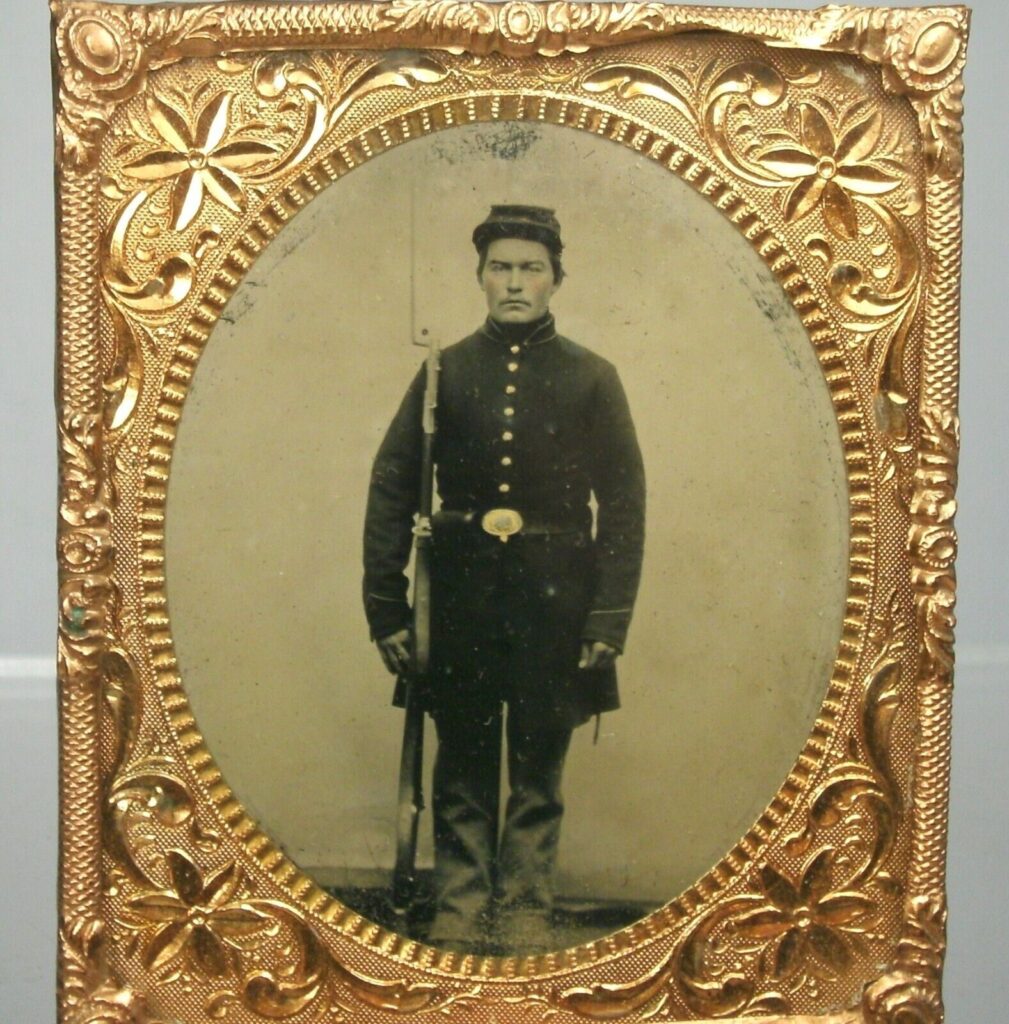BLOG
Finds and Interests
Before you could capture a moment with the click of a button, people often used tintype photography. Introduced in the mid-1800s, before film photos, people created images through this ten- to fifteen-minute process. Not only were tintypes relatively accessible, but they were also less expensive and more durable than other mid-19th-century options, such as the older daguerreotypes and ambrotypes. Because of this, photographers could process them on-site, making them wildly popular at carnivals, fairs, and sidewalks.
But what are these antique portraits worth? A few different variables can influence the resale price of an authentic antique tintype photograph.

Image Source: WorthPoint
Although general tintypes don’t typically hold much monetary value—only a few dollars per photo—tintype photographs taken during significant historic events can be worth much more.
For example, many tintypes featuring soldiers from the Civil War are often sold for higher, particularly if they have frames. The camera used to take these photos resulted in four copies of the picture being produced, offering loved ones a keepsake of their brave soldier.
Additionally, many documentary photographers on the battlefront preferred tintypes, as they had better odds of holding up in rough conditions. This category of tintype is well sought after by Civil War historians working at the National Archives and those interested in the historical period. You can expect the average Civil War tintypes to be priced between $35 and $400, with scarce items selling in the thousands. Auction houses have sold tintypes of significant figures for tens of thousands of dollars.
How to Find Authentic Tintype Photographs
Tracking down authentic, rare tintypes—also called ferrotypes and melainotypes—can be quite the task; however, the odds of finding these exceptional pieces increase when working with an antique dealer. Industry professionals can support and differentiate the item from other mid-19th-century photographic processes. If, instead, you choose to source your photographs from display boxes at vintage and antique stores or through online platforms, such as eBay, you can search for a few distinctive features. Although these small details, such as the exposure process and the coloring, are minor, they are easy to pay attention to when you know what to look for.
The exposure and fixing process of tintypes is very similar to that of ambrotypes, but instead of glass, tintypes use a thin metal plate, often made of iron. Overall, the coloring is usually a yellowish hue. Customers purchase cases, frames, or paper envelopes to protect and display their images, making it difficult to differentiate between tintypes, ambrotypes, and daguerreotypes. However, you can use a magnet to test whether the image was processed onto a metal plate, meaning it is not an ambrotype. And daguerreotypes are much more reflective than tintypes.
Happy Hunting!
Searching in various places can have pros and cons. Online auctions can present rare pieces with less effort; however, the downside is that you might face a bidding war. Pursuing vintage and antique stores may be the way to go if you prefer the journey of acquiring a piece. This strategy can be more time-intensive but can lead to a greater sense of reward. Regardless of where you turn to, don’t forget to enjoy the hunt! I currently have several lots of tintype photographs available now on my eBay storefront.
Interested in antique photographs? Learn why Victorian-era stereoscopes are making a comeback among modern-day collectors.
Will Seippel is the CEO and founder of WorthPoint, the world’s largest provider of information about art, antiques, and collectibles. An Inc. 500 Company, WorthPoint is used by individuals and organizations seeking credible valuations on everything from cameras to coins. WorthPoint counts the Salvation Army, Habitat for Humanity, and the IRS among its clients.